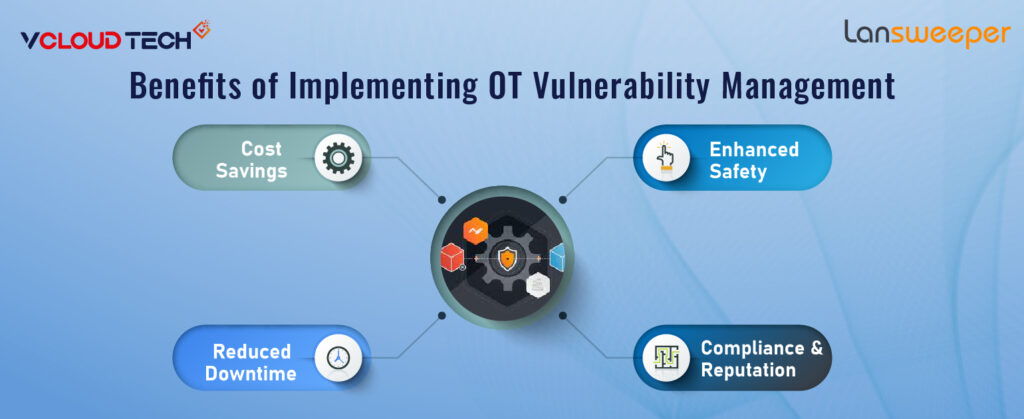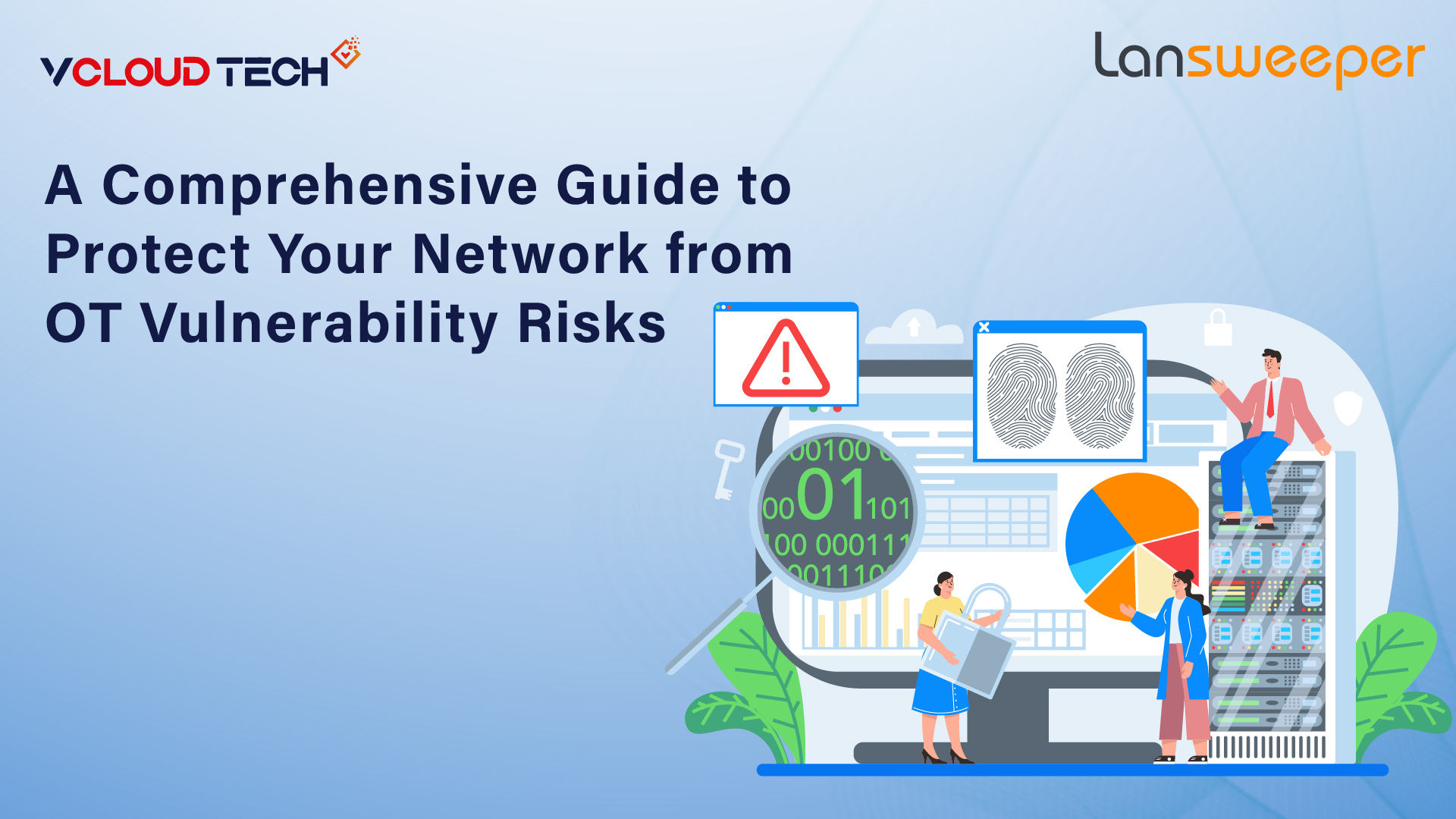In today’s digitally interconnected world, safeguarding Operational Technology (OT) networks is more critical than ever. The convergence of OT and IT systems has brought unprecedented efficiency and innovation and exposed Operation technology environments to a new wave of cybersecurity threats. For businesses that rely on industrial control systems, energy grids, and manufacturing processes, understanding and mitigating these Operation technology vulnerabilities is not just a matter of security—it’s a fundamental value proposition for protecting operations, ensuring safety, and maintaining trust with clients and partners.
Cybercrime is expected to cost the world $10.5 trillion annually by 2025, with Operation technology environments being increasingly targeted due to their critical role in infrastructure and industrial operations. A study revealed that 74% of Operation technology organizations experienced at least one cyberattack in the past year. These statistics underscore the urgent need for effective Operation technology vulnerability management.
What Are OT Vulnerabilities?
Operational Technology (OT) refers to hardware and software that detects or causes changes through direct monitoring and control of physical devices, processes, and events in an enterprise. Unlike traditional IT systems that handle data and communications, Operation Technology Systems are integral to the operation of critical infrastructure such as power plants, manufacturing facilities, and transportation networks.
However, many Operation technology systems were designed in an era when security was not a primary concern. These systems often run on outdated software, rely on unpatched legacy hardware, and lack the robust security features found in modern IT environments. The integration of these older systems with newer, connected technologies exposes Operation technology networks to a range of vulnerabilities, including:
- Legacy System Exploitation: According to a report by the SANS Institute, 55% of Operation technology environments rely on systems that are more than 10 years old, making them highly susceptible to exploitation due to outdated technology.
- Lack of Network Segmentation: 40% of Operation technology networks are not adequately segmented, allowing threats to spread more easily within the network.
- Insufficient Security Measures: Operation technology professionals admitted that their environments do not have sufficient security controls in place, such as encryption and strong authentication methods.
- Third-Party Risks: Operation tech cyberattacks will involve third-party suppliers, highlighting the importance of vendor management in securing Operation tech systems.
Key Differences Between IT and OT Vulnerability Management
While both IT and Operation tech environments require vulnerability management, the approaches to securing these systems differ significantly due to their unique characteristics:
| Aspect | IT Vulnerability Management | OT Vulnerability Management |
Purpose | Primarily manages data and communications | Controls physical processes and industrial operations |
| Update Cycles | Frequent updates and patches are common | Infrequent updates due to critical operational needs and longer cycles |
| Risk Tolerance | Can prioritize security and tolerate some downtime for patches | Prioritizes uptime and operational continuity, making patching challenging |
| Impact of Breach | Data loss, financial damage, and reputational impact | Physical consequences, operational downtime, and safety risks |
| Stakeholder Involvement | Typically involves IT teams and cybersecurity experts | Requires collaboration between IT, Operation technology engineers, and operational staff |
| Network Segmentation | Often well-segmented with robust security controls | May lack segmentation, leading to easier lateral movement of threats |
| Security Controls | Advanced security measures such as encryption, authentication, and firewalls are standard | Often lacks modern security controls, relying on older technologies |
| Threat Landscape | Faces a wide range of cyber threats, including malware, ransomware, and phishing | Increasingly targeted due to the critical nature of infrastructure |
Step-by-Step Guide for Implementing OT Vulnerability Management
1. Inventory Your OT Assets
Start by identifying and cataloging all Operation Technology Assets, including hardware, software, and network connections. Tools like Lansweeper can automate this process, providing a comprehensive overview of your Operation technology environment. Organizations that implemented automated asset management tools reduced their risk exposure by 50%.
2. Assess Vulnerabilities
Conduct a thorough vulnerability assessment to identify potential risks in your Operation technology systems. This includes evaluating the security posture of legacy systems, reviewing network configurations, and identifying weak points.
3. Segment Networks
Implement network segmentation to isolate operation technology systems from IT networks and prevent the lateral movement of threats. Use firewalls and VLANs to create secure zones within your network. A study showed that proper network segmentation can reduce the impact of a security breach by up to 75%.
4. Develop a Patch Management Strategy
Create a plan for applying security patches and updates to Operation technologies systems. Prioritize critical patches, and work with OT engineers to schedule updates during planned downtime to minimize disruption.
5. Implement Access Controls
Strengthen access controls by enforcing strong, unique passwords, multi-factor authentication, and role-based access. Regularly review access logs to detect unauthorized access attempts.
6. Train Your Team
Provide specialized training for Operation technology staff on cybersecurity best practices. This includes recognizing phishing attacks, understanding the importance of patching, and knowing how to respond to security incidents.
7. Monitor Continuously
Continuous monitoring is crucial for identifying and responding to emerging threats. Use automated tools to keep an eye on your Operation technology network and alert you to potential vulnerabilities in real-time. Forrester Research found that organizations using continuous monitoring were able to reduce incident response times by 42%.
8. Review and Update Regularly
Vulnerability management is not a one-time task. Regularly review and update your strategies to adapt to new threats and changes in your Operation technology environment.
Benefits of Implementing OT Vulnerability Management
Implementing Operation technology vulnerability management offers several key benefits:

- Reduced Downtime: By proactively identifying and addressing vulnerabilities, you can prevent costly unplanned downtime due to cyber incidents
- Enhanced Safety: Securing Operation technology systems helps protect against attacks that could compromise the safety of workers, customers, and the public.
- Compliance and Reputation: Adhering to industry regulations and best practices not only ensures compliance but also enhances your organization’s reputation as a trustworthy and secure entity.
- Cost Savings: Preventing security incidents and mitigating risks before they escalate can save your organization significant costs associated with recovery and reputational damage. The Ponemon Institute estimates that the average cost of a data breach in an Operation technology environment is $5.99 million.
Challenges in OT Vulnerability Management
While the benefits are clear, implementing Operation technology vulnerability management is not without challenges:

- Complexity of Legacy Systems: Many Operation technology systems are outdated and difficult to secure due to compatibility issues with modern security tools.
- Operational Disruptions: Applying patches and updates to Operation technology systems can be challenging without disrupting critical operations.
- Resource Constraints: Many organizations lack the resources or expertise needed to effectively manage Operation technology vulnerabilities, particularly in smaller teams where IT and Operation technology roles may overlap.
- Vendor Management: Ensuring that third-party vendors adhere to your security standards can be difficult, particularly if they use proprietary or unsupported systems.
Best Practices for OT Vulnerability Management
To overcome these challenges, consider the following best practices:
- Adopt a Holistic Approach: Integrate Operation technology vulnerability management into your broader cybersecurity strategy, ensuring alignment between IT and OT teams.
- Prioritize Critical Assets: Focus on securing the most critical Operation technology assets first, particularly those that, if compromised, would have the most significant impact on your operations.
- Leverage Automation: Use automated tools like Lansweeper to streamline asset inventory, vulnerability assessment, and continuous monitoring, reducing the burden on your team.
- Collaborate Across Teams: Foster collaboration between IT, Operation technology, and cybersecurity teams to ensure a comprehensive approach to vulnerability management.
- Engage with Vendors: Work closely with your Operation technology vendors to ensure they are following security best practices and that their systems are regularly updated and patched.
Lansweeper for Effective OT Vulnerability Management
Lansweeper is an industry-leading solution that simplifies Operation Technology Vulnerability Management. With its comprehensive asset discovery and inventory capabilities, Lansweeper provides a complete view of your Operation technology environment, identifying vulnerabilities across all connected devices. Its user-friendly interface and powerful automation tools make it easy to manage even the most complex Operation technology networks, ensuring that your systems remain secure without disrupting operations.
Lansweeper, in partnership with vCloudtech, offers a value proposition that lies in its ability to provide real-time insights into your Operation technology assets, automate vulnerability assessments, and seamlessly integrate with your existing IT and Operation technology workflows. Whether you’re dealing with legacy systems, managing remote access, or collaborating with third-party vendors, Lansweeper empowers you to take control of your Operation Technology Security with confidence.
Conclusion
As OT and IT environments continue to converge, the need for robust Operation technology vulnerability management has never been more urgent. By implementing a comprehensive strategy and leveraging tools like Lansweeper. You can protect your network from evolving threats, ensure operational continuity, and safeguard the critical infrastructure that drives your business. In the face of growing cybersecurity challenges. Investing in Operation technology vulnerability management is not just a necessity. It’s a strategic value proposition that will pay dividends in security, compliance, and peace of mind.
Reach out to us and book a Free Consultation with vCloud Tech or chat with one of our representatives. Connect with us on Twitter, Facebook, Instagram, and LinkedIn for more information.









